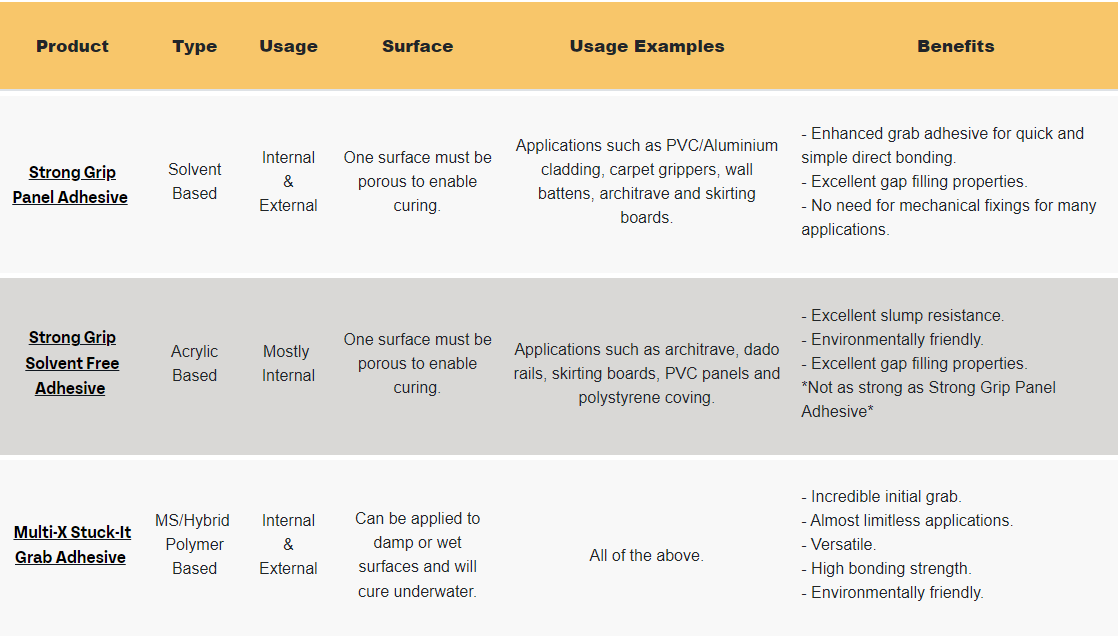Which panel adhesive should I be using?
Not sure what type of panel adhesive you should be using? Unsure as to the differences between them? Take a look below at panel adhesive explained.
The 3 Main Types of Adhesives
Acrylic Based-
Acrylic Adhesives are manufactured using acrylic or methyl acrylic polymers & fillers. They dry by a loss of water into a substrate (one of which must be porous). They are extremely strong and efficient in bonding multiple objects together and are very environmentally resistant.
Solvent Based-
Solvent based adhesives are manufactured using rubbers & resins. They are a glue or adhesion product that usually comes in the form of a liquid. Resins are dissolved in a volatile solvent to produce a tacky polymer solution, which can be extremely adhesive when dry. These dry by the evaporation of solvent air.
MS/Hybrid Polymer Based-
MS/Hybrid Polymer based adhesives combine polyurethane & silicone technology to deliver hybrid sealant that is extremely versatile. These are a one-part, elastic adhesive based on a modified silane polymer that cures when exposed to moisture to form high-performance elastomer.
Which Panel Adhesive should I order and why?

